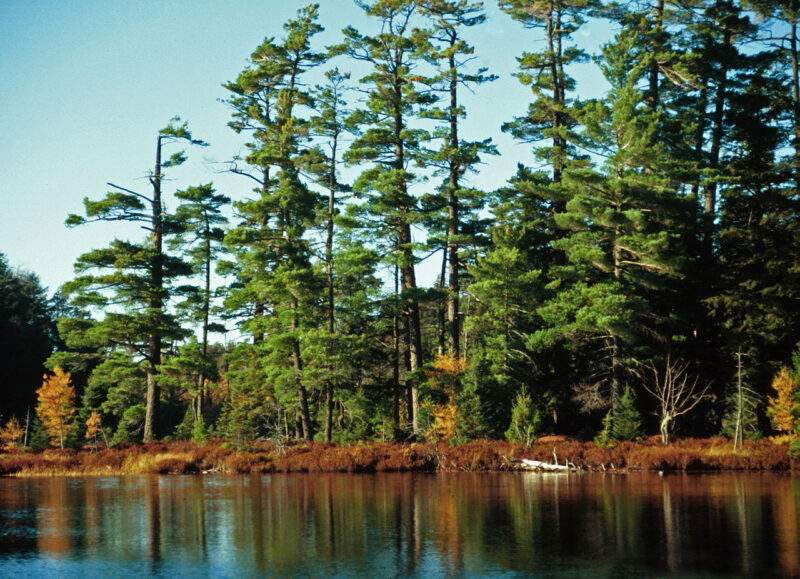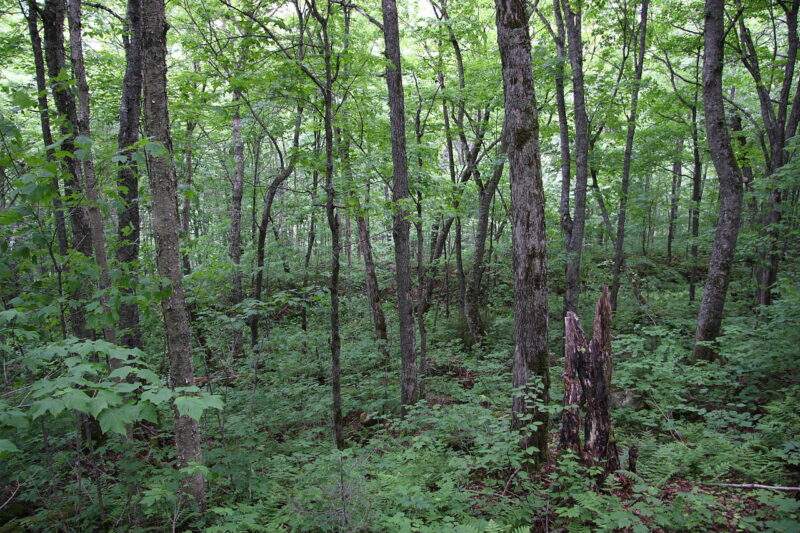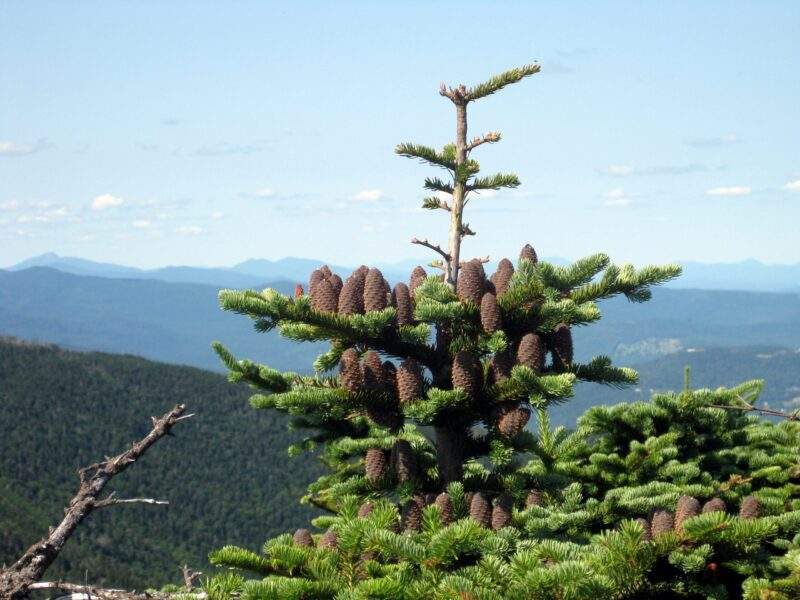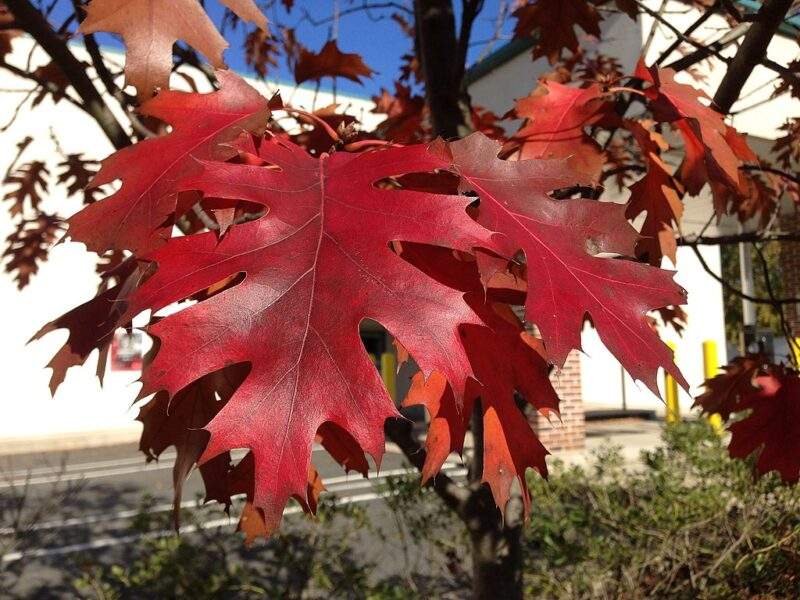The 10 Main Types of Trees in New Hampshire

Did you know that New Hampshire is known for its abundance of trees for a good reason? According to the New Hampshire forest statistics, New Hampshire had approximately 4.8 million acres of forested land, which amounts to about 81 percent of the state’s land area. In addition, there are many different types of trees in New Hampshire‘s state forests. “Even if I knew that tomorrow would go to pieces, I would still plant my apple tree,” said Martin Luther.
Unfortunately, not all types of trees are created equal, and some are more useful than others. For example, some trees in New Hampshire are more prone to disease or pests than others. Others may be more useful for timber or other purposes than others, and so on.
Are you an arborist or just a tree-loving individual? Learning about the different New Hampshire trees will help you understand them better. After reading this article, you’ll know the ten main types of trees in New Hampshire and how they look. We might even inspire you to take on your forest.
How Many Tree Species Are in New Hampshire?
Research by the University of New Hampshire shows 86 native tree species. However, the exact number is difficult to determine because they exist in different forms, such as shrubs. Below are 10 types of trees abundant in New Hampshire worth recognition.
1. Canadian National Flower, the Red Maple

The red maple (Acer rubrum) is an ornamental tree because of its red flowers, buds, and bark during winter. The tree grows to 40-50 feet, with branches spreading to approximately 40 feet.
How did the red maple become the state tree of Rhode Island? In the late eighteenth century, the school commissioner gave students a test to select their favorite trees, and fortunately, the highest number of students chose the red maple.
The fruits of the red maple, called the samaras, are food for many rodents and squirrels, while rabbits eat the tender shoots and leaves.
2. The Broad King’s Arrow, White Pine

White pine can grow to 100 feet tall with a diameter of 3-4 feet and can have a longevity of up to 400 years. The straight trunked tree is smooth and gray when young but changes to gray-brown and furrowed as it ages. However, it’s not a tree you can climb with your bare hands to avoid prickling. The white pine grows inexplicably well in well-drained soil.
Why is white pine a common type of tree in New Hampshire? The straight trunks make it one of the best-valued trees in New Hampshire from the early mast trade periods. In colonial times, the king of England’s representatives would make a mark called “the broad king’s arrow,” as it was a reservation for the crown.
The tree has a deep history in New Hampshire for use by the Royal Navy. However, due to their shape, the trees’ primary use is to produce pulp and furniture, such as matchsticks, crate paneling, and boats. You can use them for your next Christmas to experience the beauty.
3. The Hemlock

Hemlock is a name derived from a thought of similarity to the smell of crushed foliage and the poison hemlock. The tree is known for its pyramid shape and drooping branches. Over and above, four hemlock species are native to the United States. However, you’ll find only two in the area located in the east.
The eastern hemlock is one of the most appealing American conifers. It has a broad base and can reach heights of 40 to 70 feet. On the other hand, the hemlock is under attack by the hemlock woolly adelgid.
In native America, the hemlock’s value was in the tannin in its bark. The natives used the bark to:
- Make medicinal tea rich in vitamin C.
- Make ointments to treat burns and sores.
- Tanning of leather and producing dyes for leather and wool
- In the modern world, trees’ applications are making lumber, construction, and paper pulp.
Did you know that the author of “The Hemlocks Poem,” Emily Dickson, may have been inspired by a hemlock tree that her father planted in the 1860s?
4. Canada’s National Emblem Tree, the Sugar Maple

They are also known as rock maple or hard maple. They are known as shade trees in America. The sugar maple tree grows to 40 meters, spreads its branches for 40-50 inches, and has dense crown-shaped leaves.
How does the sugar maple behave? The crown-shaped leaves turn yellow, burnt orange, and red during fall. Also, the tree produces small greenish-yellow glowers curving downwards on long and delicate stems in May and April. The main plant, however, produces fruit in October and November. It performs well in well-drained acidic or alkaline soil and with good sunlight.
In 1663, chemist Rober Boye introduced the sweet substance in the tree to people. Therefore, people use the tree subsequently to treat coughs and diarrhea. In 2001, Barry Bonds switched from a traditional wooden bat to a sugar maple bat to break a world record, hitting 73 home runs.
5. New Brunswick Provincial Tree, Balsam Fir

Abies bulasamea is an evergreen tree that prefers moist, cool, acidic, and well-drained soil—growing to a height of 45-75 inches with a 20 -25 inch spread. Balsam fir grows slowly as it only extends for 12 inches a year. Abies bulsamea has a symmetrical spire-like crown with a brilliant dark green color and a spicy fragrance.
Naturally, the balsam fir makes a beautiful Christmas tree. Additionally, using the branches in holiday wreaths and greenery is typical. It develops oily resin blisters along the trunk and yields cones that start as dark purple and turn gray-brown. When ripe, the scales fall off, leaving only the cone’s central axis.
6. The King of British Trees, the Red Oak

Red oak (Querius Rubra) is one of the most popular oak species for lumber due to its red fall foliage. Due to its non-showy monoecious nature, it is attractive to wildlife and birds. The fire-resistant plant does well in sunlit areas in fertile and acidic sandy and moist soils, growing to 60-90 feet and maturing in 200-300 years. Carl Sagan said, “The oak tree and I are made of the same stuff.”
The bark is distinct as it looks like a downhill ski trail streaking distant hills between rough ridges. The red oak is the fastest-growing family of oaks, with a solid lateral root system. The tree’s leathery leaves have pointed lobes, producing many variations of leaf designs on a tree.
The New Hampshire tree carries 18-25% of fat. However, the tree produces acorns in cycles, with a crop peak of one every three to four years. As a result, many trees are listed on New Hampshire’s most extensive tree list, making them one of the biggest and most common tree types in New Hampshire.
7. The New Hampshire Official State Tree, the Paper Birch

The paper birch (Betula papyriferra) is also known as the canoe birch or white birch. The terms “paper birch” and “canoe birch” come from the native Americans who used the bark for making canoes and writing paper. Interestingly, the white birch bark is white and native to New Hampshire, making it one of the best types of tree in New Hampshire.
The birch reaches a height of 80 feet. Its bark is white with a yellow tinge, pilled with thin paper-like layers. Did you know that two birches championed the University of New Hampshire Cooperative Extensions Bigtree Program list in 2013? Well, at 80 feet tall, 124 inches in circumference, and with an average crown of 46 feet in Sandwich, the tree lay in second place, after Stoddard, which was 87 feet in length, 116 inches in circumference, and 62 feet spread with the longevity of 140 years. In addition, David Lamb has created beautiful works of art from birch trees.
Native Americans ate the tree’s inner bark and could tap it as an apple for tea, medicine, sweetening sugars, and vinegar. Have you ever eaten fruity molasses? If you have, that’s the taste of birch sugar. Additionally, the birch tree has friends and enemies all year round. The friends of the birch are birds such as woodpeckers, nuthatches, and swallows who live in cavities in the white birch. The siskins, grouse, and chickadees also eat the seeds and catkins.
8. The Lady of the Woods, Yellow Birch

A New Hampshire yellow birch is an excellent option for creating a quieter, more peaceful environment. They are small trees, growing around 25 ft tall, and feature beautiful yellow-green leaves. Birch trees are common in the state’s northern parts. The plant’s fruit is a plump, upright, hairy cone with inch nutlets, attracting birds, insects, and mammals. They proliferate and make excellent decorative trees, explaining why native Americans used them as cloth.
In New Hampshire, birch trees provide both food and fiber. The yellow birch has elliptical leaves about 2.5 inches wide and grows to 100 feet tall. Yellow birch plants perform best in moist, rocky, and acidic soils. Also, the plant grows for 150 years, with some trees living up to 300 years. However, the tree requires sufficient watering as hot and dry weather may stunt the plant’s growth rate.
Frequent pruning is necessary for plants during the dormant season. In spring or winter, the plants may bleed when pruned. As a result, the birch is less susceptible to pests such as leaf miners and bronze birches.
Check for stem canker aphids and birch skeletonizers if you spot any leaves on a birch plant. Deer eat young birch leaves. You can use yellow birch wood to manufacture furniture, veneers, and flooring.
9. The Beech Tree, Queen of the British Trees

The beech (genus Fagus) is an ornamental and timber tree native to New Hampshire. How do you differentiate between beech trees?
The beech tree is broad and round-headed with thin, smooth, steel-gray bark. The beech is a monoecious tree in which the male catkins hang from long stalks, and the female cup-surrounded flowers grow in pairs. Once pollinated, the cup becomes woody, enclosing one or two beechnuts (Beachmast). In addition, some rare plant species, such as boxes and a variety of orchids, are related to the birch due to its dense canopy.
The beech foliage is food for barred hook tips and olive crescent, while the leaves are food for mice, voles, and birds. The tree is also home to some wood-boring insects and birds.
Do you know how the beach earned its name as the “Queen of British Trees”? In ancient Celtic, Fagus was the god of beech trees. Fagus was for divining and making poultices for relieving swellings. The beech tree’s timber is also helpful for various purposes, including:
- Fuel, furniture, tool handles, and sports equipment making.
- Pigs eat their edible nuts
- The French roast edible nuts as a substitute for coffee
- They are an excellent habitat for garden birds, and you can use them in your garden to welcome birds.
10. The Baseball Bat Tree, White Ash

The white ash (Fraxinus Americana) is a shade and an ornamental tree in eastern America. The tree, which grows from an oval or pyramid shape to an oval shape, provides shade for many parks. The tree grows at a reasonable rate of roughly 13′-24′ each year, reaching a height of 50-80′ and a spread of 40′-50′.
The white ash grows in alkaline, acidic, loamy, moist, and well-drained soils, with at least six hours of unfiltered sunlight for six hours a day as the best condition. As a result, the white ash provides exquisite landscaping during fall as it shades its color from yellow to deep yellow or maroon.
Native Americans used leaf decoction as a laxative after childbirth. They also brew tea using the bark for itchy scalps. The seeds are appetite stimulants and aphrodisiacs.
White ash is rugged, shock-resistant, and has excellent bending qualities. Therefore, the tree has earned its trust over the years as the leading baseball bat tree. Also, the wood makes furniture, hockey sticks, church pews, and tool handles.
However, the white ash is facing a continuous threat from the emerald ash borer. The insect burrows deep into the bark, killing the plant approximately five years after infestation.
Only a Small Sample
These are just some of the trees found in New Hampshire. There are plenty more to discover. So, whether you want an ornamental tree or a source of lumber for your home, you can find a tree that will suit your needs. While there are many types of trees in New Hampshire, each is unique and essential to the environment. Trees are vital because they help keep the environment cool in the summer and warm in the winter, provide oxygen for the environment, and serve as wildlife habitats. So, the next time you’re outside, take a moment to appreciate that New Hampshire tree.
You can also read:






